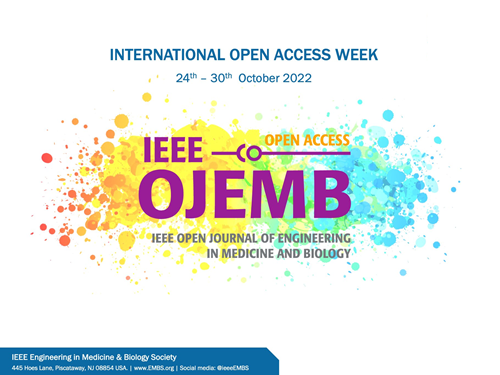Quantifying CineECG Output for Enhancing Electrocardiography Signals Classification
IF 2.9
Q3 ENGINEERING, BIOMEDICAL
IEEE Open Journal of Engineering in Medicine and Biology
Pub Date : 2025-07-10
DOI:10.1109/OJEMB.2025.3587993
引用次数: 0
Abstract
CineECG, a vectorcardiography-based method, uses standard 12-lead electrocardiography and 3D heart and torso models to depict the electrical activation path during the heart cycle, offering detailed visualization of cardiac electrical activity without numerical quantification. Our research aims to quantify CineECG outputs by defining 54 features that describe the route, shape, and direction of electrical activation. These features were used to develop a multinomial regression model classifying electrocardiography signals into normal sinus rhythm, left bundle branch block, right bundle branch block, and undetermined abnormalities. Trained and tested on 6,860 signals from the PhysioNet/Computing in Cardiology Challenge 2020 and THEW project, the model achieved an F1 score over 84% (normal sinus rhythm: 93%, left bundle branch block: 93%, right bundle branch block: 90%, undetermined abnormalities: 84%). The results suggest CineECG's potential in enhancing electrocardiography interpretation and aiding in the accurate diagnosis of various abnormalities.量化CineECG输出增强心电图信号分类
CineECG是一种基于矢量心电图的方法,它使用标准的12导联心电图和3D心脏和躯干模型来描绘心脏周期中的电激活路径,在没有数值量化的情况下提供心脏电活动的详细可视化。我们的研究旨在通过定义54个特征来量化CineECG输出,这些特征描述了电激活的路径、形状和方向。利用这些特征建立多项回归模型,将心电图信号分为正常窦性心律、左束支传导阻滞、右束支传导阻滞和未确定异常。对来自PhysioNet/Computing in Cardiology Challenge 2020和THEW项目的6860个信号进行训练和测试,该模型获得了超过84%的F1评分(正常窦性心律:93%,左束支阻滞:93%,右束支阻滞:90%,未确定异常:84%)。结果表明,CineECG在增强心电图解释和帮助准确诊断各种异常方面具有潜力。
本文章由计算机程序翻译,如有差异,请以英文原文为准。
求助全文
约1分钟内获得全文
求助全文
来源期刊

IEEE Open Journal of Engineering in Medicine and Biology
ENGINEERING, BIOMEDICAL-
CiteScore
9.50
自引率
3.40%
发文量
20
审稿时长
10 weeks
期刊介绍:
The IEEE Open Journal of Engineering in Medicine and Biology (IEEE OJEMB) is dedicated to serving the community of innovators in medicine, technology, and the sciences, with the core goal of advancing the highest-quality interdisciplinary research between these disciplines. The journal firmly believes that the future of medicine depends on close collaboration between biology and technology, and that fostering interaction between these fields is an important way to advance key discoveries that can improve clinical care.IEEE OJEMB is a gold open access journal in which the authors retain the copyright to their papers and readers have free access to the full text and PDFs on the IEEE Xplore® Digital Library. However, authors are required to pay an article processing fee at the time their paper is accepted for publication, using to cover the cost of publication.
 求助内容:
求助内容: 应助结果提醒方式:
应助结果提醒方式:


